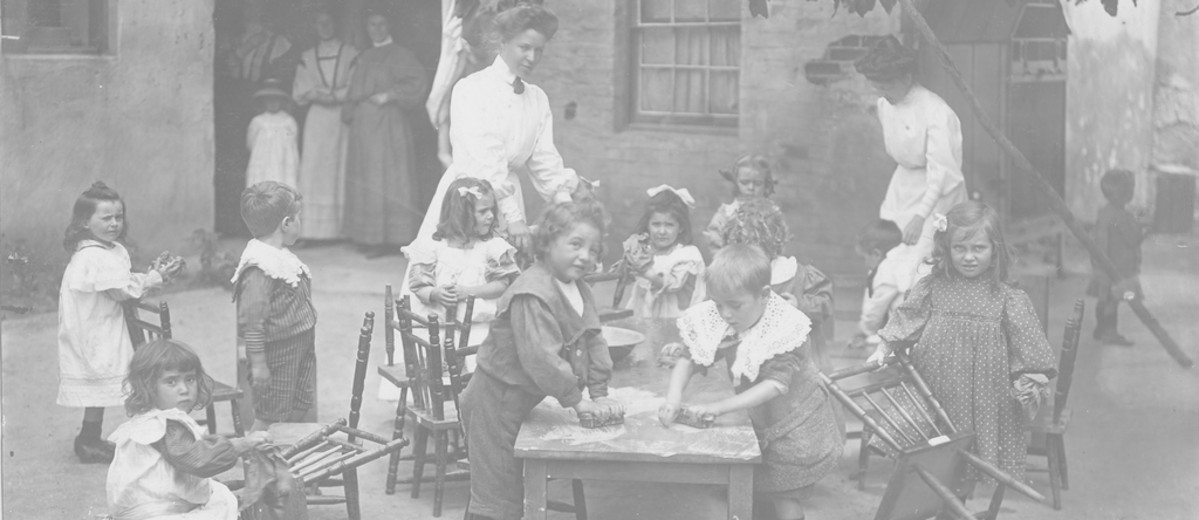Subject
ContributeBased on the philosophy and understanding of child development of the German educator and philosopher Friedrich Froebel, kindergartens in South Australia began for both educational and humanitarian reasons.
The earliest Adelaide kindergartens were for underprivileged children. In 1905 Catherine Helen Spence and Anglican clergyman Bertram Hawker saw the striking transformation of former street urchins at Sydney’s Woolloomooloo kindergarten. Hawker arranged for Frances Newton, the Chicago-trained director of the Sydney Kindergarten Training College and her gifted young graduate Lillian de Lissa to give demonstrations in Adelaide. Using Froebel’s ‘Gifts and Occupations’ (teaching apparatus) they taught local children, comfortable on child-size chairs at small tables, before engrossed educationists and interested citizens. A public meeting at the University of Adelaide initiated the Kindergarten Union of South Australia, which was managed by volunteer committees and funded by philanthropists, including Robert Barr Smith, William Mitchell and Peter Waite, donations, fundraising and a modest government grant.
In February 1906 the Franklin Street Free Kindergarten opened at number 214, a cottage in the city’s poorest area. Lillian de Lissa, the director, lived next door. Through her open-house policy local suspicion melted away, and Franklin Street mothers helped equally poor Bowden mothers gain their kindergarten in 1908. As principal of the Kindergarten Training College (opened in 1907) and director of the Kindergarten Union, de Lissa introduced Montessori methods to Adelaide kindergartens. Gradually the Union opened further free kindergartens; ten existed by 1939, mainly in church halls, in Adelaide, Bowden, Kensington, Hackney and Port Adelaide.
A kindergarten conference held in Adelaide in 1936 stimulated increased national cooperation. The Commonwealth established model Lady Gowrie Child Centres in each state, Adelaide’s at Thebarton in 1940; Commonwealth funding enabled two city kindergartens to provide long-day care during World War II. Increasingly the crucial importance of children’s early years and kindergartens were acknowledged, and in mid century special programs began for migrant and Aboriginal children.
With 300 kindergartens, in 1975 the union became a statutory body. The state government took it over in 1985, emphasising child-care. After many vicissitudes, the Kindergarten Teachers College became the de Lissa Institute of Early Childhood and Family Studies within the University of South Australia. By century’s end the enriching experience of kindergarten was an accepted part of South Australian childhood.
Media
Add mediaImages

State Library of South Australia, SLSA: B 58767, http://collections.slsa.sa.gov.au/resource/B+58767, Public Domain

State Library of South Australia, SLSA: PRG 280/1/4/328 , http://collections.slsa.sa.gov.au/resource/PRG+280/1/4/328, Public Domain

State Library of South Australia, SLSA: PRG 280/1/6/353, http://collections.slsa.sa.gov.au/resource/PRG+280/1/6/353, Public Domain

State Library of South Australia, SLSA: PRG 280/1/12/346 , http://collections.slsa.sa.gov.au/resource/PRG+280/1/12/346, Public Domain


CommentAdd new comment
Quickly, it's still quiet here; be the first to have your say!